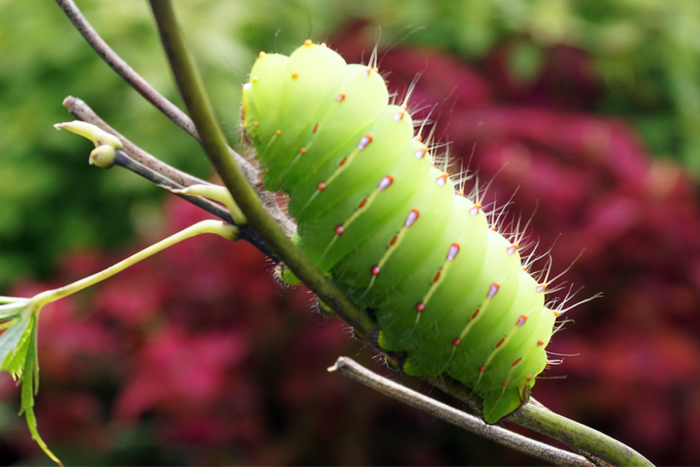
For so many years, the focus of gardening has been on growing food and flowers. Now we’re thinking beyond what we want for ourselves to what our gardens can do for the world around us too.
Consider butterflies, for instance. It’s no longer just about growing nectar-rich flowers to attract the beautiful adults for our enjoyment. Today’s gardeners realize that it is also vitally important to provide the host plants that their larvae (commonly called caterpillars) feed on. Granted, the term “caterpillar gardening” may not have the same allure as “butterfly gardening,” but this is a more complete view of the role you can play in supporting their continued health and survival.
It is interesting to note that some butterflies and moths can work with a variety of host plants, while others have very specific needs. Eastern black swallowtail (Papilio polyxenes), for instance, will lay eggs on dill, fennel, parsley, celery, and a number of other plants in the carrot family, and a couple in the rue family as well. Spicebush swallowtail (Papilio troilus), on the other hand, prefers just a few species—spicebush (Lindera benzoin, Zones 4–9), obviously, and sassafras (Sassafras albidum, Zones 4–9). Monarch (Danaus plexippus) larvae are pretty much limited to just milkweeds (Asclepias spp. and cvs., Zones 3–11).
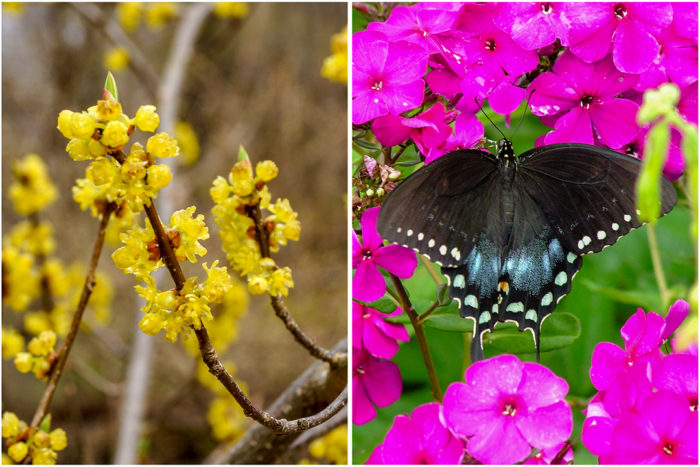
To maximize your caterpillar-gardening efforts, start by looking for plants that serve as larval hosts for a variety of butterfly species and that supply nectar for the adults as well. Native species of asters (Symphyotrichum spp. and cvs., Zones 4–8), ironweeds (Vernonia spp. and cvs., Zones 4–9), and milkweeds, for example, are three excellent choices. Many other native perennial flowers serve as a host for at least one butterfly species, so if you needed yet another reason to go native with your gardens, you’ve got it!
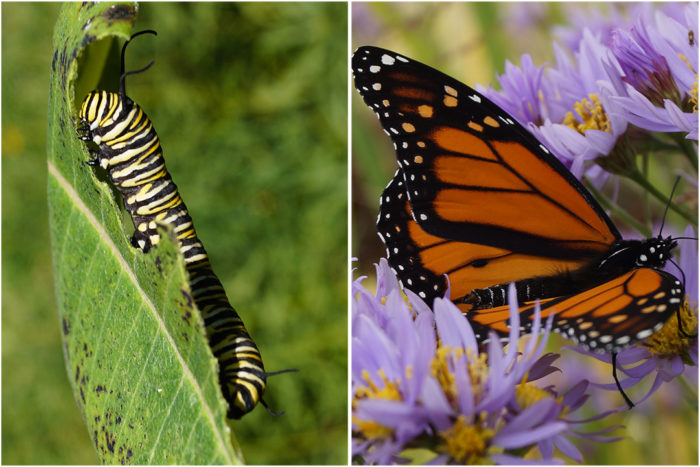
Next, think beyond blooms. Grasses normally don’t come to mind for butterflies, but Mid-Atlantic natives little bluestem (Schizachyrium scoparium, Zones 3-9) and switch grass (Panicum virgatum, Zones 5-9), for instance, provide food for the larvae of many skippers. If you have the opportunity to add a tree to your landscape, native maples (Acer spp., Zones 3–9), oaks (Quercus spp., Zones 3–9), and willows (Salix spp., Zones 4–9) are a few excellent choices because they provide food for many different caterpillars. There are many other terrific trees you could consider as well. Louise Schaefer of Edge of the Woods Native Plant Nursery in Orefield, Pennsylvania, particularly recommends American hackberry (Celtis occidentalis, Zones 2–9), which is a vital larval host plant for several showy butterfly species, including question marks and mourning cloaks.
For more planting suggestions, get yourself a copy of Bringing Nature Home by Douglas W. Tallamy, which includes an extensive list of recommended native plants for landscapes in the Mid-Atlantic (and other regions too). Read the rest of the book as well, and you’ll know why your efforts to preserve native insects are so important.
One of the biggest changes needed to be a good caterpillar gardener is a mental one: realizing that chewed leaves are a sign of success rather than a problem to be dealt with. If any visitors are rude enough to point out the ragged leaves, tell them that you’re doing your part as a butterfly gardener—and know that you’re really a caterpillar champion at heart.
—Nancy J. Ondra is the author of over fifteen books, including Grasses, The Perennial Care Manual, and The Perennial Matchmaker.
Fine Gardening Recommended Products
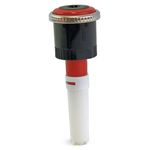
Hunter Industries MP-1000-90 Hunter Nozzle
Fine Gardening receives a commission for items purchased through links on this site, including Amazon Associates and other affiliate advertising programs.
- Double-pop technology flushes the nozzle during start-up and shutdown to prevent clogging
- Wind-resistant, multi-directional streams provide even coverage

Lee Valley Mini Garden Shear Set
Fine Gardening receives a commission for items purchased through links on this site, including Amazon Associates and other affiliate advertising programs.

Gilmour 811673-1001 Sprinkler
Fine Gardening receives a commission for items purchased through links on this site, including Amazon Associates and other affiliate advertising programs.
- Adjustable collar for partial- to full-circle coverage
- Dial precisely sets spray distance
- On/off switch eliminates trips from sprinkler to spigot


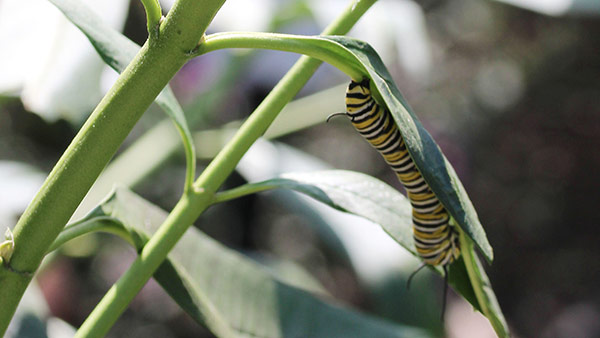
















Comments
Log in or create an account to post a comment.
Sign up Log in